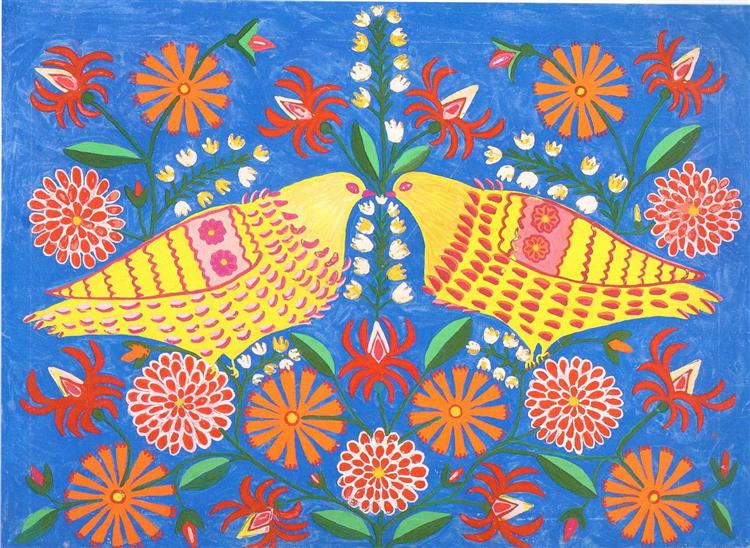It's been a few weeks since I began curating the Eastern European library collection, and looking back at it now I'm filled with a sense of accomplishment: the project has evolved from an idea into a tangible endeavour (in the form of physical books and written word) that holds the potential to reshape perceptions, empower communities, and foster a deeper understanding of Eastern Europe's diverse narratives.
When I first introduced the project, I shared my personal experiences as an Eastern European immigrant in the UK. The lack of representation and understanding I encountered ignited a passion within me to change the narrative. Now, having delved into the curatorial process, I realise that this project is not only about addressing underrepresentation but also about creating a space that embraces the complexities of Eastern European identity.
I'm acutely aware of the broader context that shapes the narratives and histories I am seeking to highlight. The war in Ukraine, a deeply complex and tragic conflict that began in 2014, serves as a stark reminder of the enduring challenges faced by Eastern Europe. This conflict has brought to the forefront the fragility of borders in the post-Soviet era and the intricate geopolitical struggles at play in the region. The war's devastating consequences, including significant loss of life and displacement of civilians, underscore the urgency of projects like this collection that aim to promote understanding, empathy, and interconnectedness among diverse communities. I wanted to especially highlight the importance of politics and history of the region, unveiling the reality many of the post-Soviet countries face, while raising awareness of the colonisation of Eastern Europe and Central Asia by Russia. The impact of it is still very much visible today, therefore it’s crucial to point out the importance of de-colonisation of this region and departure from imperialist narratives..
Unveiling Eastern Europe is more than just a collection of materials; it's a testament to the resilience and diversity of Eastern European communities. As I was carefully selecting texts on literature, history, visual art, and politics, I've come to appreciate the richness of my own heritage a little bit more. I was reminded of the brilliant writers, artists and scholars that come from this diverse region. Each piece tells a unique story, contributing to the tapestry of Eastern Europe's history and culture.
One of the most rewarding aspects of this journey has been the opportunity to amplify marginalised voices within the Eastern European diaspora. The project serves as a platform for LGBTQ+ individuals, ethnic minorities, and other marginalised communities to share their experiences. There is, I believe, this notion that Eastern Europe is a homogeneous region. I don’t think that’s true and I want my collection to reflect that, hence the inclusion of queer, Roma, and Jewish perspectives.
The curated collection isn't just for Eastern Europeans—it's an invitation for cultural exchange. It was my goal for readers from various backgrounds to engage with the collection, to challenge their preconceptions, and to foster empathy. This idea of mutual understanding and appreciation is at the heart of the project's mission.
As I've navigated the curatorial process, I've encountered challenges that have tested my determination. The process of selecting materials that capture the multifaceted nature of Eastern Europe while challenging stereotypes has required careful thought and research. But these challenges have also been a reminder of the importance of this project. The obstacles we face mirror the broader struggle for accurate representation and understanding.
Looking ahead, I'm excited about the impact this collection could have. It's not just about the present moment—it's about creating a legacy of inclusivity and celebration. It's about building bridges of understanding and fostering an interconnected society. I'm reminded of the initial goals I set out in the beginning—to bring Eastern European narratives to the forefront, challenge stereotypes, and foster greater understanding.
And it's not just about the project itself, but also about the individuals whose lives it may touch. It's about the (not necessarily Eastern European) immigrant who will find solace in the pages of a book, knowing they are not alone, and smile seeing a surname similar to their own on the cover. It's about the curious reader who will explore a culture they knew little about. It's about the collective effort to rewrite a narrative, to reshape perceptions, and to celebrate the vibrant diversity that Eastern Europe embodies.
In these few weeks, the project has evolved from an idea into a reality, from a personal endeavour into a collective mission. I'm grateful for the support from the library team and the sense of purpose this journey has given me. As we move forward, I'm excited to see how the Eastern European library curation will continue to unfold and make a lasting impact on individuals, communities, and our understanding of the world around us.



No comments:
Post a Comment
Anybody can comment on this blog, provided that your comment is constructive and relevant. Comments represent the view of the individual and do not represent those of The University of York Information Directorate. All comments are moderated and the Information Directorate reserves the right to decline, edit or remove any unsuitable comments.